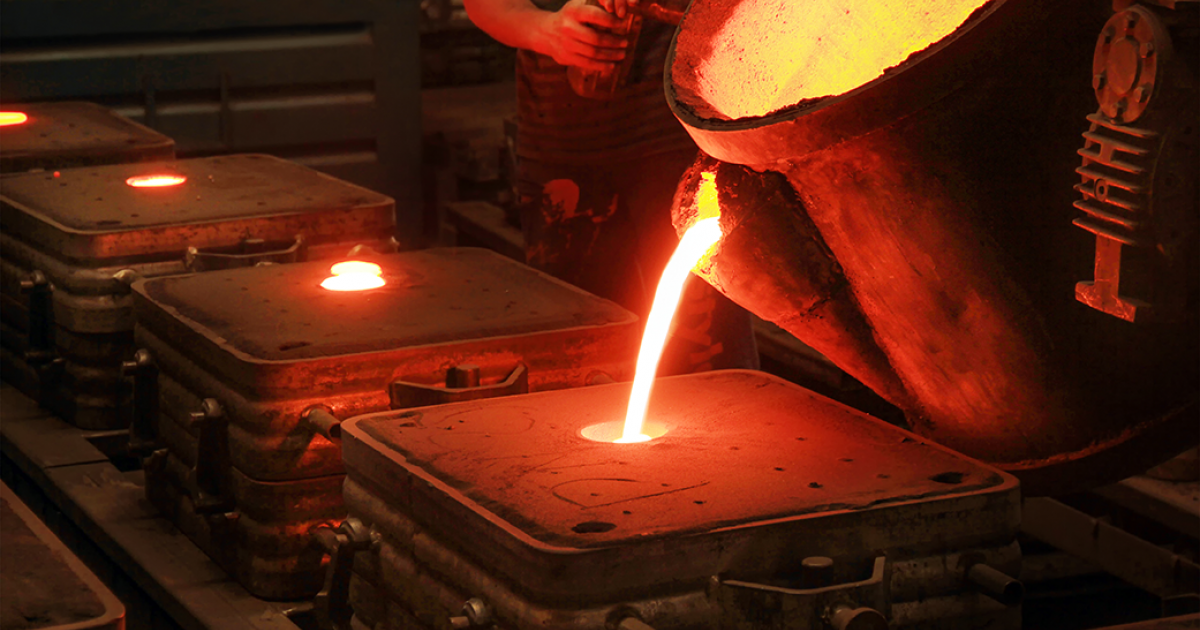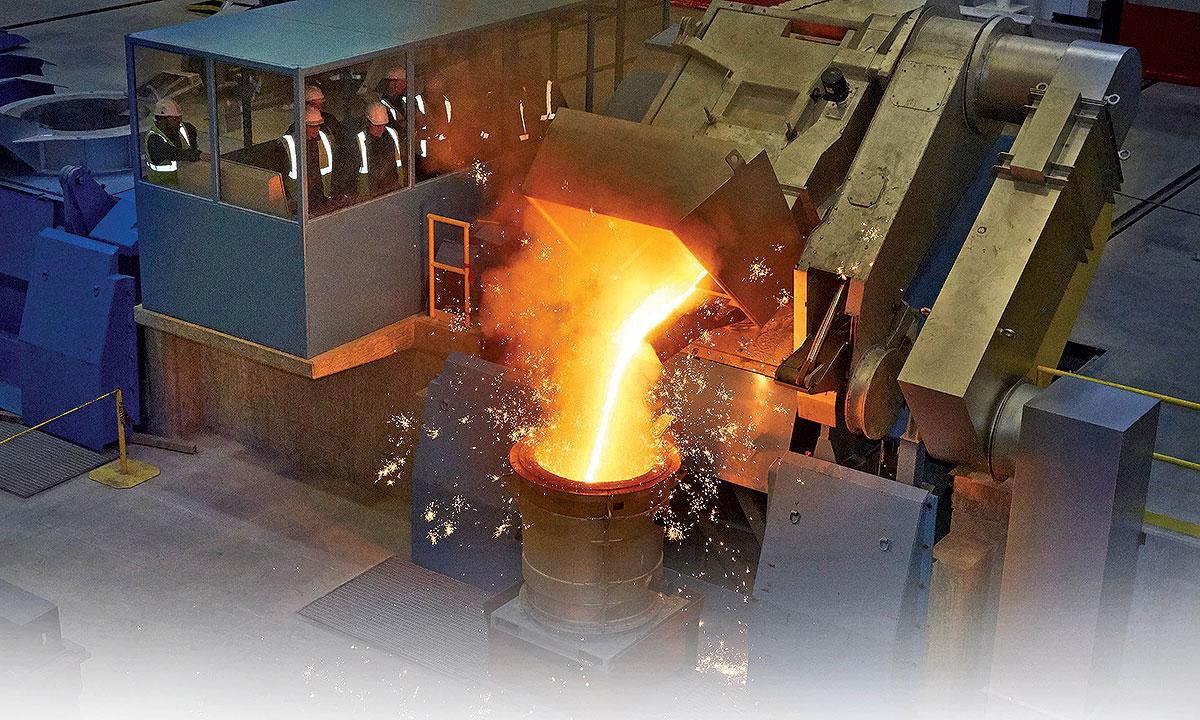Time-Tested Metal Casting Techniques That Still Define Modern Foundries
Wiki Article
Everything About Metal Casting: How Foundries Supply Quality and Precision in Manufacturing
Metal casting stands as a fundamental procedure in manufacturing, where raw metals are changed into specific elements. Foundries use numerous casting techniques to attain preferred shapes and features. Each strategy includes its own set of advantages and limitations. Comprehending these nuances is important for appreciating how quality and precision are preserved throughout the process. The discussion in advance will certainly explore the complex characteristics of metal casting and its importance throughout multiple industries.The Essentials of Metal Casting
Metal casting is a basic procedure in manufacturing that includes shaping liquified metal into desired types. This important technique starts with the option of basic materials, commonly various metal alloys, which are melted in a heater. When the metal reaches the suitable temperature, it ends up being fluid and prepared for casting.The procedure requires a mold and mildew, normally made from sand, metal, or ceramic, which specifies the last shape of the actors things. Once the liquified metal is put right into the mold and mildew, it cools down and strengthens, taking on the mold and mildew's shapes.
After cooling down, the casting is eliminated from the mold and mildew, and any kind of required finishing procedures, such as trimming or polishing, are performed. This method permits producers to generate intricate forms and elements with high precision and minimal waste. Metal casting is commonly used throughout various sectors, from automotive to aerospace, highlighting its importance in modern manufacturing.
Sorts Of Casting Approaches
While various casting methods exist, each technique is and supplies unique benefits matched for various applications. Sand casting, among the most usual methods, utilizes sand as the mold product, enabling detailed designs and large components. Investment casting, known for its precision, employs a wax pattern covered in ceramic, making it suitable for intricate geometries. Pass away casting, which entails forcing molten metal into molds under high pressure, is regularly used for mass manufacturing of little, comprehensive components. In addition, covering molding integrates sand and material to create thinner, more precise mold and mildews, improving surface area finish. One more approach, continual casting, allows the manufacturing of lengthy lengths of metal shapes, simplifying manufacturing processes. Each of these methods plays an essential role in the metal casting industry, addressing certain needs from manufacturing volume to design complexity, consequently contributing to the diversity of applications throughout numerous industries.The Role of Foundries in Manufacturing
Foundries serve a necessary function in the manufacturing landscape, as they transform raw metals right into usable components with different casting procedures. These centers employ a series of techniques to create items that meet exact specifications, therefore making certain quality and effectiveness in production (Metal Casting). By using approaches such as sand casting, investment casting, and die casting, foundries satisfy varied sectors, consisting of auto, aerospace, and building and construction
Eventually, foundries are integral to the manufacturing community, supplying vital parts that support a broad range of markets and applications. Their precision and adaptability drive performance in contemporary production.
Products Made Use Of in Metal Casting
The choice of products made use of in metal casting is crucial for accomplishing the preferred residential or commercial properties and performance of the final item. Different metals such as iron, bronze, and light weight aluminum are frequently used, each offering distinctive benefits. Light weight aluminum is preferred for its light-weight and corrosion-resistant top qualities, making it perfect for auto and aerospace applications. Iron, particularly cast iron, is known for its outstanding fluidness and strength, suitable for heavy machinery and facilities components. Bronze, with its exceptional wear resistance, is often used in marine environments.In addition, materials such as silica sand are regularly utilized for mold and mildew production, giving a fine equilibrium in between longevity and ease of shaping. The option of materials additionally consists of additives like changes, which enhance the casting process by boosting fluidity and lowering oxidation. Eventually, the suitable selection of these products greatly influences the efficiency and top quality of the casting process.
Top quality Control in the Casting Refine
Quality control in the casting process is important to assure that end products fulfill sector criteria and requirements. Numerous inspection strategies are employed to identify issues and analyze the stability of actors parts. In addition, adherence to developed requirements and certifications enhances the dependability and efficiency of actors products.Inspection Techniques Employed
Maintaining the honesty of cast metal elements depends heavily on various evaluation strategies. Foundries utilize aesthetic examinations as an initial action to recognize surface issues, such as additions or splits. Non-destructive screening (NDT) techniques, consisting of ultrasonic screening and radiographic inspection, are crucial for finding interior defects without endangering the element's integrity. Dimensional inspections making use of calipers and coordinate measuring devices verify that elements meet specified tolerances. Additionally, chemical analysis validates that the alloy structure straightens with required requirements. These assessment techniques jointly validate that the castings satisfy the needed high quality and performance standards, inevitably decreasing the risk of failing in their desired applications. Implementing these rigorous inspections is basic for maintaining high criteria in metal casting manufacturing.Specifications and Certifications
Standards and certifications play an important role in the quality assurance of the casting procedure. Foundries adhere to different international and industry-specific criteria, such as ISO 9001 and ASTM guidelines, ensuring uniformity and dependability in their items. These requirements outline the essential requirements for products, manufacturing techniques, and testing treatments, adding to a much more efficient production process. Certifications, such as AS9100 for aerospace applications, better emphasize the importance of quality control in specialized sectors. By getting these qualifications, foundries demonstrate their dedication to excellence, get more info improving and minimizing issues consumer complete satisfaction. Normal audits and inspections verify compliance, promoting continuous enhancement and technology within the sector. Eventually, adherence to developed requirements grows trust between producers and clients.Developments in Casting Technology

3D Printing Combination
Integrating 3D printing technology right into metal casting procedures is revolutionizing the manufacturing landscape. This innovative combination improves the style and production of complicated geometries that typical approaches battle to attain. By using additive manufacturing for developing cores and molds, factories can considerably decrease preparations and product waste. 3D printing allows for fast prototyping, making it possible for producers to examine styles swiftly and effectively, therefore promoting iterative renovations. This technology likewise supports the production of light-weight parts, which are necessary in markets such as aerospace and vehicle. Therefore, the combination of 3D printing not just improves procedures however additionally raises the precision and top quality of actors metal items, noting a noteworthy development in the industry.Automated Manufacturing Processes
The improvements in 3D printing have paved the means for further technologies in automatic manufacturing processes within metal casting. Foundries are increasingly taking on robotics and automation to improve effectiveness and precision. Automated systems streamline the entire casting operations, from mold creation to finishing and pouring. Smart sensors and real-time surveillance permit precise control of temperatures and material circulation, decreasing waste and boosting quality. Additionally, software program services promote far better design and simulation, allowing producers to maximize procedures prior to manufacturing begins. These computerized production processes not just decrease labor expenses but likewise lessen human error, making certain regular result. Because of this, the combination of advanced modern technologies in metal casting is reinventing production abilities and meeting the growing needs of different sectors.Advanced Product Development
As sectors require higher performance and sustainability, developments in material growth for metal casting are becoming an essential focus. Researchers and engineers are exploring new alloys and composites that improve mechanical properties while decreasing ecological effect. Advancements include light-weight materials that preserve toughness, making it possible for far better gas effectiveness in transportation applications. In addition, the unification of recycled products is becoming more widespread, aligning with sustainability goals. Advanced casting techniques, such as 3D printing and precision molding, enable the production of intricate geometries that standard techniques can not attain. These growths not just boost the functionality of cast parts yet additionally enhance production performance. On the whole, the constant advancement of material scientific research drives the future of metal casting, meeting the demands of contemporary markets.
Applications of Metal Casting Throughout Industries
Metal casting plays a crucial duty in different industries, as it enables for the production of complex shapes and high-quality components with family member effectiveness - Aluminum Casting. In the automobile sector, cast metals are important for producing engine blocks, transmission situations, and other vital parts that call for toughness and precision. Aerospace markets make use of metal casting for elements like generator blades and structural elements, where dependability is paramountFurthermore, equipment and devices manufacturing benefit from metal casting by creating gears, housings, and various other complex components that boost performance. The construction industry likewise employs metal casting for architectural features, architectural supports, and installations, showcasing flexibility.
The medical field counts on actors steels for medical tools and implants, highlighting the need for biocompatibility. On the whole, metal casting is a foundational procedure across several sectors, providing remedies that meet strict high quality criteria and efficiency requirements.
Frequently Asked Questions
What Precaution Are Absorbed Metal Casting Foundries?
In metal casting foundries, precaution include safety equipment, ventilation systems, routine devices maintenance, staff member training, and emergency situation procedures to alleviate dangers related to high temperature levels, unsafe materials, and possible accidents throughout the casting process.Just How Do Foundries Take Care Of Waste and Environmental Impact?
Foundries take care of waste and ecological impact through reusing materials, implementing purification systems for emissions, and sticking to policies - Aluminum Foundry. They additionally adopt sustainable methods, such as decreasing power usage and making use of environmentally friendly materials in their processesWhat Are the Expenses Connected With Metal Casting Processes?
The prices related to metal casting processes include resources, labor, devices upkeep, power intake, and waste management. In addition, changes in market value and conformity with ecological regulations can significantly affect general expenses for shops.Just How Does Metal Casting Contrast to Other Production Approaches?
Metal casting uses distinctive benefits, such as intricate forms and high product effectiveness, compared to methods like machining or marking. It may include much longer lead times and greater preliminary expenses, depending on job specs.
What Career Opportunities Exist in the Metal Casting Market?
The metal casting sector offers different career chances, including factory management, procedure engineering, top quality guarantee, mold and mildew layout, and device operation. Specialists can also go after functions in study and development, sales, and ecological health and wellness and safety.Metal casting stands as a fundamental process in manufacturing, where raw metals are transformed right into particular elements. Metal casting is a fundamental procedure in producing that involves forming molten metal into preferred kinds. One more approach, continual casting, makes it possible for the manufacturing of lengthy lengths of metal forms, simplifying production procedures. The prices associated with metal casting procedures consist of raw products, labor, devices upkeep, power usage, and waste administration. The metal casting industry supplies various job possibilities, including factory administration, procedure engineering, quality assurance, mold and mildew layout, and machine operation.
Report this wiki page